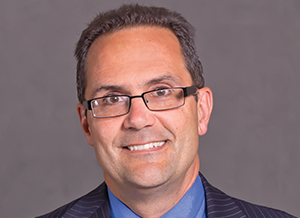Goodbye, golf-course view? What to do when the golf course adjoining your home is redeveloped
Posted on
August 7, 2018What to do when the golf course adjoining your home is redeveloped
Golf courses throughout the country are closing, and the land is being redeveloped for uses that not only destroy the adjoining owners’ “golf-course views,” but diminish the value of their properties. What, if anything, can the owners do to protect their investments?
Smart Business spoke with William J. Maffucci, an attorney with Semanoff Ormsby Greenberg & Torchia LLC, to find out.
Does paying a “lot premium” for a lot with a golf-course view give the purchaser control over future use of the golf-course land?
No. Payment of a lot premium does not ensure that the purchaser will enjoy a golf-course view for any amount of time.
I’m not saying such purchasers have no legal remedies to protect their investments. But if they do have such remedies, they arise from other facts, not from the mere payment of lot premiums.
For example, as part of the planning and promotion of golf-course communities, the developers often agree to include in the land records restrictions on the way in which the golf-course land could be used in the future. Those limitations are intended for the benefit of future owners of the neighboring lots, who, as a general matter, can enforce them.
But there’s an important distinction to note here: A deed or development-plan provision that restricts the use of land to certain categories of use (such as ‘recreational’) or that prohibits other categories of use (such as residential or commercial development) is not the same as a covenant (or promise) by the developer or golf-course operator to continue using the land as a golf course. Affirmative covenants to operate land as a golf course indefinitely or for any significant period are extremely rare, and it’s unclear whether they’re legally enforceable.
That distinction is important because it changes the legal remedies available to the adjoining or neighboring owners. An order enforcing an affirmative covenant to operate land as a golf course would literally prevent any change of use, but an order enforcing a generic use restriction (such as a prohibition on industrial use) would not preclude new uses (such as farming) that would not violate the restriction.
Is attempting to prevent a proposed change of use the only way adjoining or neighboring owners can protect their investment?
Sometimes the owners have another remedy. If they had been induced to pay premium prices by misrepresentations about the future use of the golf-course land, and if they reasonably relied upon those misrepresentations, they may be able to recover monetary damages through civil litigation against their sellers. The damages would be calculated as the difference between the actual fair-market value of the property and the value that the property would have had if the permitted uses of the golf-course land had actually been restricted in the way represented. The owners might be able to recover additional damages if they can prove that the sellers/developers made the misrepresentations intentionally, knowing that the buyers were certain or likely to lose their golf-course views soon.
Is litigation the only option?
Actually, no. In fact, litigation — which is lengthy, expensive, and uncertain — is sometimes the worst option.
The redevelopment of golf-course land often requires a variance from the municipality. Variances cannot be granted until the municipal land-use authority conducts a public hearing at which neighboring owners have the ability to provide input as to the impact of the proposed development. And owners may have other political avenues by which they may ensure that their concerns are brought to the attention of the local decision makers.
If a golf course is closed and the land is redeveloped in a way that reduces the value of neighboring residential lots, the owners of the lot can, in any case, try to lower their property-tax burdens by filing appeals of the property assessments with the county board of assessments. At the hearings on the appeal, the owners would present evidence (preferably through a professional appraiser) that, as a result of the closure and redevelopment of the golf course, the fair-market values of the appellants’ lots are now comparable to that of other local properties (not close to the former golf course) that have much lower assessments.
